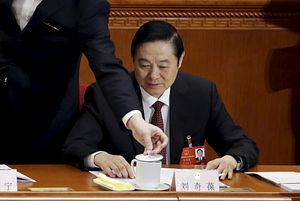There was news in Australia last week that Fairfax Media had signed a deal with China Daily to produce an eight-page liftout that would run in the Sydney Morning Herald, The Age and the Australian Financial Review once a month. Fairfax will have no editorial say over the content.
Cue some “but think of the propaganda!” pearl clutching. Oddly this has not been from the conservative side of Australian media (many of whom already assume Marxists run Fairfax), but from the more left-leaning ABC and Crikey. The AFR has ripped into Chinese influence in Australia, from political sponsorship to the Confucian Classrooms initiative that teaches schoolchildren Chinese for free (or at least, funded by the Chinese government).
Radio National, part of the ABC, said, “The media deals, signed during a recent visit to Sydney by the Communist Party’s Central Propaganda official Liu Qibao, means China’s colossal PR machine will have a say in what news we get from China.”
Fairfax issued a statement to the ABC’s Media Watch stating that the deal was in order with others it had made (there is a longer standing one with Russia Beyond the Headlines). In the U.S., both the Wall Street Journal and the Washington Post run their own China Watch. There has been no visible change in U.S. sentiment thanks to the pernicious influence of communist rhetoric declaiming against Freedom of Navigation Patrols.
China has been trying for some time to improve its global image via soft power efforts that go beyond panda diplomacy, spending large amounts of money on its cable TV service CCTV and expanding China Daily. Foreign Policy wrote in April that “China Daily is a significant part of China’s efforts to project influence abroad. It boasts 13 publications in English alone, and its U.S. edition has become a regular and visible presence for many residents of Washington, DC.”
The first China Watch has already laid into South China Sea sovereignty issues, saying that “Manila has no leg to stand on” when it comes to international arbitration. In this sense it may be out of keeping with Australia’s official viewpoint, which is that Canberra has no interest in actual sovereignty disagreements but believes the “rules-based order” must be maintained. That order is a persistent theme of the latest, and most latterly ambitious, Defense White Paper, issued in February.
This attempt to influence Australian dialogue and thinking on China is largely symbolically worrying given that China Watch is hardly scintillating reading and will probably sway few Down Under. For a look at what regularly runs, check here in the WSJ’s version. The Aussie China Watch talks up trade and the China Australia Free Trade Agreement, something that is generally more exciting for Australia than China. Hopes for wine and agriculture, or services, are high, especially given the resources downturn.
Yet a quote from a 2009 South China Morning Post story is worth remembering: “There is a big gap between China’s image among foreign people and its idea of itself. Clichéd propaganda measures are useless to narrow the gap, and bigger efforts with smarter communication skills are needed,” said Yu Guoming, dean of the Renmin University journalism school. Whoever wrote this may like to think on those words.

































